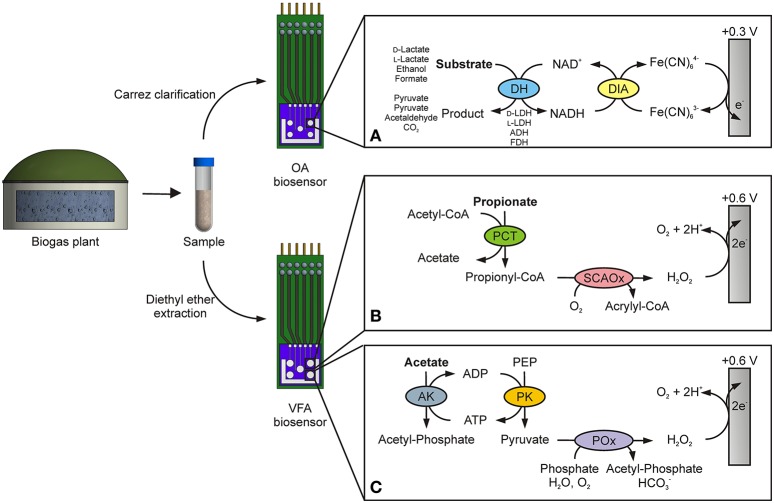Figure 1.
Amperometric detection principles of the organic acid (OA) and volatile fatty acid (VFA) biosensor. A sample of fermentation broth is taken from a biogas plant and pretreated by either Carrez clarification or ether extraction. (A) Determination of ethanol, formate, d- and l-lactate is then realized by using a bi-enzymatic system, consisting of a specific dehydrogenase (DH) and diaphorase (DIA). For simultaneous detection, on each working electrode DIA with a different DH is immobilized, namely d-lactate dehydrogenase (d-LDH), l-lactate dehydrogenase (l-LDH), alcohol dehydrogenase (ADH) and formate dehydrogenase (FDH), respectively. The product Fe(CN)64− is re-oxidized at an applied potential of +0.3 V vs. Ag/AgCl. The oxidation of H2O2 at a working potential of +0.6 V vs. Ag/AgCl is used for measurement of propionate (B) and acetate (C). For propionate quantification, propionate CoA-transferase (PCT) and short-chain acyl-CoA oxidase (SCAOx) are used. Combination of acetate kinase (AK), pyruvate kinase (PK) and pyruvate oxidase (POx) enable amperometric detection of acetate.

